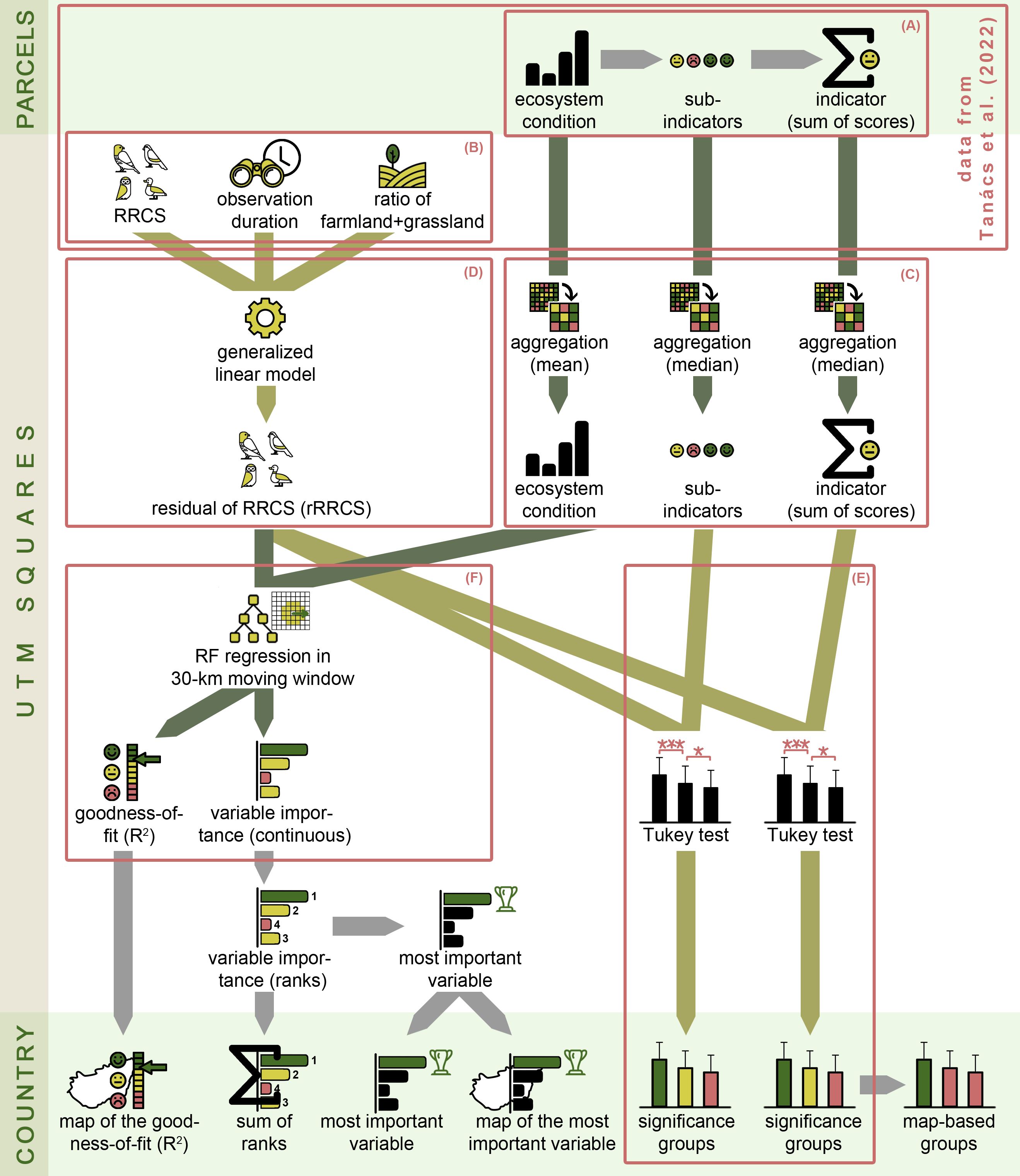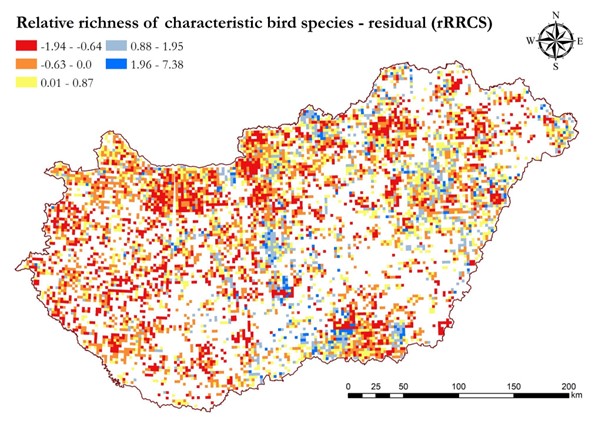Ecosystem condition map and bird species

Recent policies have set ambitious targets to halt biodiversity loss, emphasizing the need for robust monitoring and assessment programs. One way to provide suitable information to ensure successful progress is to map the integrity/condition of the ecosystem. Large-scale ecosystem condition mapping is often based on proxy variables, which have some known connection with biodiversity. Three researchers from the ELTE and the HUN-REN Centre for Ecological Research now examined different aspects of ecosystem condition mapping of croplands, using an already existing cropland condition map of Hungary and bird census data for comparison. Ákos Bede-Fazekas, assistant professor in our department, and his colleagues studied how relevant are the proxy variables used to make the cropland condition map, how well it aligns with the relative richness of farmland bird species, and how all these change in space. The research, the results of which were published in the D1-ranked scientific journal "Ecological Indicators", was led by Eszter Tanács. The researchers found that the use of proxy-based maps was reasonable. The proportion of semi-natural areas was the best variable in predicting the richness of farmland bird species, supporting the idea that croplands are crucial for maintaining ecosystem health at the landscape level. The ability of the chosen proxy variables to describe the richness of farmland bird species, and, hence, the ecosystem condition, varied spatially. This finding highlights the importance of regional differences in ecosystem condition mapping.



